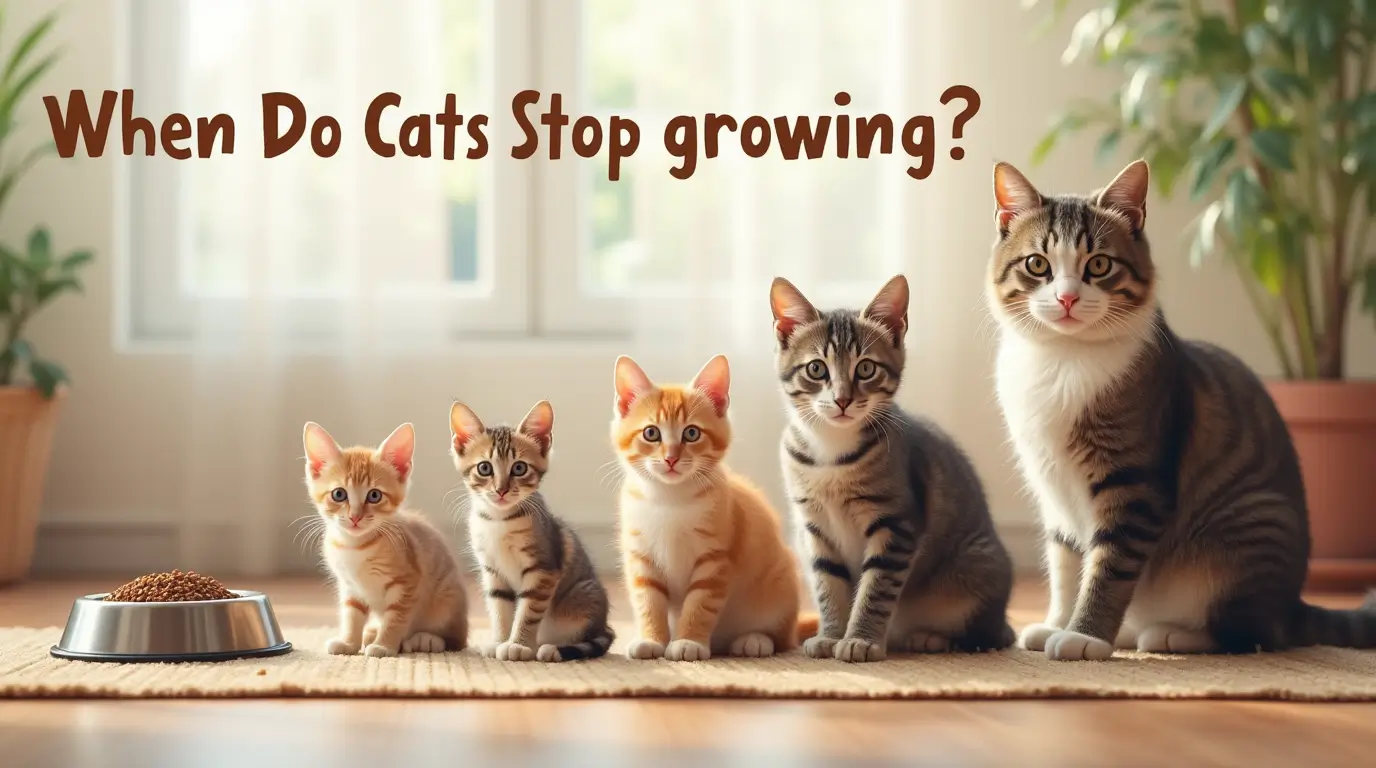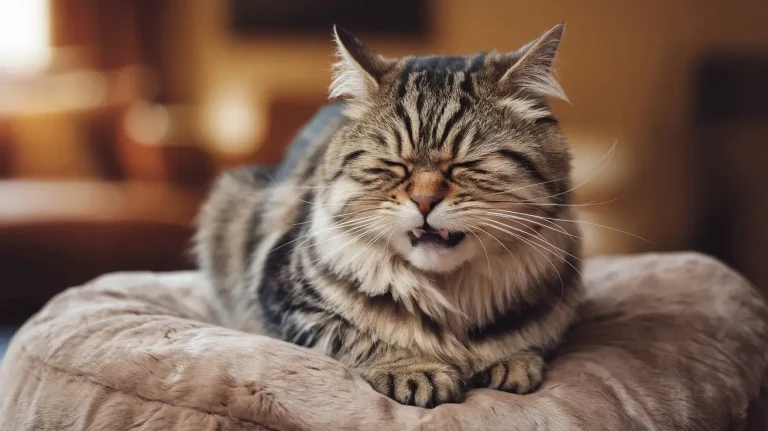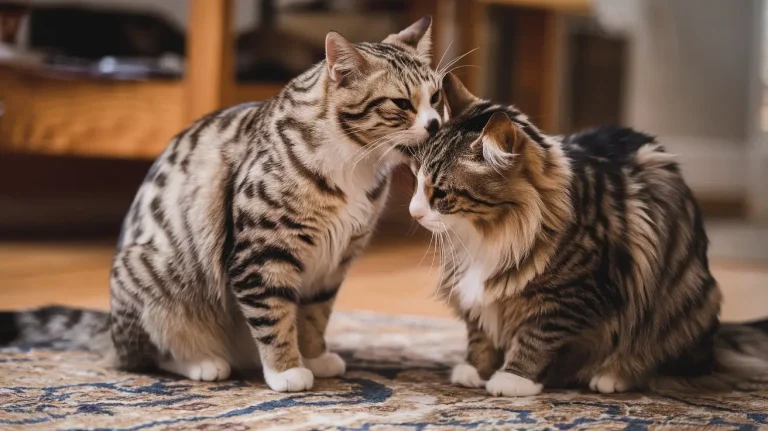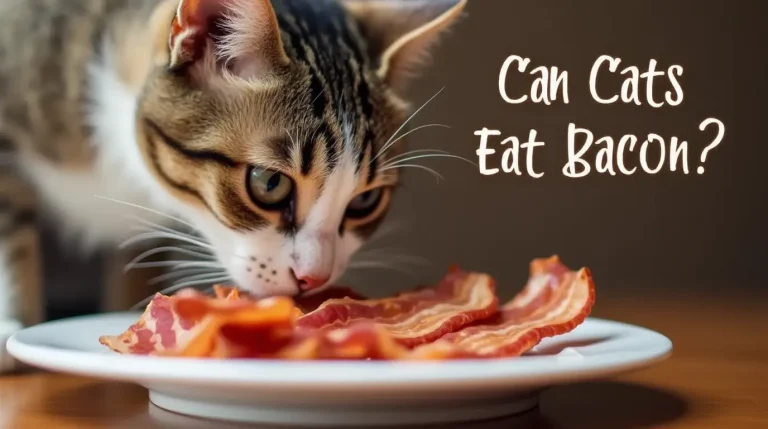Cats are fascinating creatures, and watching them grow from tiny, playful kittens into majestic adults is one of the most rewarding experiences for any pet owner. But have you ever wondered when do cats stop growing? Understanding your cat’s growth stages is not only interesting but also crucial for ensuring they receive proper care during their developmental years.
While many factors influence how long and how much a cat grows, such as breed, nutrition, and overall health, there are general timelines that apply to most felines. From rapid growth in kittenhood to gradual maturation into adulthood, each stage plays an important role in shaping your cat’s size, behavior, and physical capabilities. In this article, we’ll explore the average age cats stop growing, the key factors affecting their development, and what you can do to support healthy growth every step of the way.
Whether you’re a new cat parent or simply curious about feline development, this guide will provide all the information you need to understand your cat’s growth journey.
Table of Contents
The Average Age Cats Stop Growing
When it comes to feline development, one of the most common questions among cat owners is when do cats stop growing? While every cat is unique, there are general timelines that apply to most breeds. Understanding these timelines can help you anticipate your cat’s growth spurts and prepare for their transition into adulthood.
General Timeline for Cat Growth
Most cats experience significant growth spurts in cats during their first six months of life. During this period, kittens grow rapidly, doubling or even tripling their birth weight. Afterward, their growth slows down but continues steadily until they reach full physical maturity. On average, most domestic cats stop growing between 1–2 years of age, though this timeline can vary depending on factors like breed, genetics, and overall health.
Cat Skeletal Maturity
A key milestone in a cat’s growth journey is achieving cat skeletal maturity. This refers to the point at which a cat’s bones have fully developed, and their growth plates (areas of cartilage at the ends of long bones) close. For many smaller breeds, such as Domestic Shorthairs, skeletal maturity occurs around 18 months. However, larger breeds may take longer to reach this stage.
Puberty in Cats
Another important aspect of feline development is puberty in cats, which typically begins between 5–9 months of age. During this time, cats start to develop secondary sexual characteristics, such as changes in behavior and scent marking. While puberty doesn’t directly affect physical size, it signals the beginning of adulthood and often coincides with the slowing of growth rates.
Breed-Specific Differences
It’s essential to note that not all cats follow the same growth pattern. Larger breeds, such as the majestic Maine Coon, may continue growing well beyond the typical 1–2 year mark. Maine Coons can take up to 4–5 years to reach their full size! On the other hand, smaller breeds like the Siamese or Domestic Shorthair usually stop growing by around 18 months. These differences highlight the importance of considering breed-specific needs when caring for your cat.
Factors That Influence Growth Duration
While the average age range provides a good guideline, several factors can influence how long a cat grows. Proper nutrition, regular exercise, and overall health are critical in ensuring your cat reaches its full potential. For example, malnutrition or underlying health issues could result in stunted growth, while overfeeding might lead to obesity, which can negatively impact skeletal development.
In summary, while most cats stop growing between 1–2 years of age, larger breeds may take significantly longer to reach their full size. By understanding your cat’s specific growth timeline and providing adequate care, you can support their healthy development throughout their formative years.
Dog Vomiting White Foam: Causes, Treatment, and When to Worry
Factors That Influence Cat Growth
While genetics play a significant role in determining how large your cat will grow, several other factors can influence both the duration and extent of their growth. Understanding these factors is essential for ensuring your feline companion reaches its full potential in terms of size and health. Below, we’ll explore three primary influences on cat growth: nutrition, breed, and health.
Nutrition: The Foundation of Healthy Growth
Proper nutrition is one of the most critical factors affecting a cat’s growth. During their formative months, kittens require a diet rich in essential nutrients to support their rapid development. A balanced diet ensures that your cat receives the right amount of protein, calcium, and other vital elements necessary for healthy bones, muscles, and organs.
- Protein Requirements for Kittens: Protein is crucial for muscle development and overall growth. Growing kittens need more protein than adult cats to fuel their energy needs and build strong tissues. High-quality animal-based proteins, such as those found in chicken, turkey, or fish, are ideal for supporting optimal growth.
- Calcium for Growing Cats: Calcium is essential for the development of strong bones and teeth. Insufficient calcium intake during kittenhood can lead to weak skeletal structures, while excessive calcium may cause imbalances that hinder proper bone growth. Ensuring an appropriate balance of calcium and phosphorus in your cat’s diet is key to preventing issues like stunted growth.
The impact of diet on cat growth cannot be overstated. Malnutrition during the early stages of life can result in delayed or incomplete development while overfeeding can contribute to obesity—a condition that puts undue stress on developing joints and bones.
Breed: Genetic Determinants of Size and Growth Rate
Genetics largely dictate how big your cat will grow and how quickly it will mature. Different breeds have distinct growth patterns, with some reaching their full size much earlier than others.
- Maine Coon Growth Timeline: As one of the largest domestic cat breeds, Maine Coons undergo a prolonged growth phase. These majestic cats may continue growing until they are 4–5 years old, gradually gaining both height and weight over this extended period.
- Siamese Cat Size: In contrast, Siamese cats are smaller and tend to reach their adult size by around 12–18 months. Their slender build and shorter growth duration reflect the genetic differences between breeds.
Understanding your cat’s breed-specific growth timeline helps set realistic expectations for their size and maturity. However, even within a breed, individual cats may vary due to unique genetic factors.
Health: Addressing Issues That Can Hinder Growth
Health plays a pivotal role in determining whether a cat achieves its full growth potential. Certain conditions can either accelerate or impede growth, making it essential to monitor your cat’s well-being closely.
- Stunted Growth in Cats: Malnutrition is one of the leading causes of stunted growth in cats. If a kitten does not receive adequate nutrition during its critical developmental stages, it may fail to reach its expected size. Other potential causes include underlying medical conditions, such as hormonal imbalances or chronic illnesses.
- Obesity in Cats: On the flip side, overfeeding can lead to obesity, which poses its own set of risks. Excess weight places unnecessary strain on a growing cat’s joints and skeletal system, potentially causing long-term damage. It’s important to strike a balance between providing enough calories for growth and avoiding excessive weight gain.
Regular veterinary check-ups can help identify and address any health concerns that might affect your cat’s growth. Early intervention is key to ensuring your feline friend develops into a healthy adult.
Key Stages of Cat Development
Understanding the key stages of feline development is essential for any cat owner. From the rapid growth of kittenhood to the gradual maturation into adulthood, each stage plays a critical role in shaping your cat’s physical and behavioral characteristics. Below, we break down the major milestones in a cat’s life, focusing on kitten development, feline maturation, and physical development in cats .
0–3 Months: The Rapid Growth Phase
The first three months of a kitten’s life are marked by explosive growth and development. During this period, kittens experience significant increases in size, weight, and cognitive abilities. Proper feeding and care are crucial to support their burgeoning energy needs.
- Physical Development: Kittens double or even triple their birth weight within the first few weeks. Their bones, muscles, and organs grow rapidly, requiring a nutrient-dense diet rich in protein, fats, and essential vitamins.
- Behavioral Development: This is also a critical time for socialization. Kittens begin exploring their surroundings, learning how to interact with humans and other animals. Play becomes an important part of their routine, helping them develop coordination and strength.
- Feeding Tips: Provide high-quality kitten food that meets their nutritional needs. Frequent small meals are recommended during this phase to accommodate their growing appetite.
4–6 Months: Puberty Begins
By four to six months of age, kittens enter adolescence—a transitional phase where both physical and behavioral changes become more pronounced.
- Physical Changes: Cats at this stage continue to grow but at a slower pace compared to earlier months. They start developing secondary sexual characteristics, such as scent marking (spraying) in males and heat cycles in females. Their adult teeth fully emerge, replacing their baby teeth.
- Behavioral Changes: Adolescence brings noticeable shifts in behavior. Kittens may become more independent, curious, and sometimes rebellious. Some may exhibit territorial behaviors, so it’s a good idea to consider spaying or neutering during this period to reduce unwanted behaviors like spraying.
- Puberty Onset: For most cats, puberty begins between 5–9 months of age. While not directly tied to overall growth, this milestone signals the onset of reproductive maturity and coincides with the slowing of growth rates.
7–12 Months: Slower Growth but Continued Development
Between seven and twelve months, cats transition from adolescence to young adulthood. Although their growth slows down, they still undergo important physical and mental developments.
- Muscle and Bone Development: At this stage, cats focus on building muscle mass and refining their motor skills. Regular play and exercise are vital for strengthening their muscles and improving flexibility.
- Dental Health: By now, all permanent teeth should be in place. It’s important to establish good dental hygiene practices, such as brushing their teeth and providing dental treats, to prevent future issues.
- Behavioral Maturity: Many cats start displaying more mature behaviors, becoming calmer and less impulsive. However, some may still retain playful tendencies well into adulthood.
1–2 Years: Final Stages of Growth, Reaching Adulthood
By the time they reach one to two years of age, most cats have completed their growth journey and entered adulthood. While larger breeds like the Maine Coon may take longer to fully mature, smaller breeds typically stop growing around this time.
- Final Physical Adjustments: Any remaining growth spurts occur during this period, particularly in terms of muscle tone and body composition. Cats refine their hunting instincts and hone their agility.
- Health Maintenance: As they approach adulthood, maintaining a balanced diet and regular veterinary check-ups becomes increasingly important. Adult cats require fewer calories than growing kittens, so adjust their feeding accordingly to avoid obesity.
- Emotional Stability: Most cats achieve emotional stability by two years of age, though individual personalities will vary. Providing a stimulating environment with toys, scratching posts, and interactive play can keep them happy and engaged.
Visual Representation: A Cat Growth Chart
To better illustrate these stages, consider including a visual aid like a growth chart or infographic. Here’s an example of what it could include:
| Age Range | Key Characteristics | Nutritional Needs |
|---|---|---|
| 0–3 Months | Rapid growth, socialization, teething | High-protein kitten food, frequent meals |
| 4–6 Months | A balanced diet, calcium-rich foods | Balanced diet, calcium-rich foods |
| 7–12 Months | Muscle and bone development, behavioral maturity | Gradual transition to adult cat food |
| 1–2 Years | Final growth spurts, reaching adulthood | Maintenance diet, portion control |
A colorful infographic with images of kittens at different ages can make this information more engaging and easy to understand for readers.
FAQs About When Do Cats Stop Growing
Q1: Why is my cat not growing?
If you’re concerned that your cat isn’t growing as expected, several factors could be at play:
- Genetics: Some breeds naturally grow slower or remain smaller than others. For example, a Siamese may never reach the size of a Maine Coon.
- Nutrition: Poor diet or malnutrition can lead to stunted growth. Ensure your kitten is receiving adequate protein, fats, and essential nutrients during their developmental stages.
- Health Issues: Underlying medical conditions, such as parasites, hormonal imbalances, or chronic illnesses, can also hinder growth. Consult your veterinarian if you suspect a health issue.
Q2: How much should a kitten weigh at 6 months?
The weight of a kitten at six months depends on its breed and gender. Here are the general guidelines:
- Small Breeds (e.g., Siamese): Around 4–6 pounds
- Medium Breeds (e.g., Domestic Shorthair): Approximately 6–8 pounds
- Large Breeds (e.g., Maine Coon): Can range from 8–12 pounds
Keep in mind that individual variation exists even within breeds. Regular weigh-ins and monitoring of your kitten’s body condition score can help ensure they’re growing properly.
Q3: Does spaying/neutering affect cat growth?
Spaying or neutering your cat can have subtle effects on their growth and metabolism:
- Growth Impact: Studies suggest that early spaying or neutering (before sexual maturity) may result in slightly taller leg bones due to delayed closure of growth plates. However, this difference is usually minimal and doesn’t significantly affect overall size.
- Metabolism Changes: After spaying or neutering, cats often experience a decrease in metabolic rate, which increases the risk of weight gain. To prevent obesity, adjust portion sizes and maintain an active lifestyle for your cat.
Q4: What should I feed a growing kitten?
A balanced diet is crucial for supporting healthy growth in kittens. Consider the following tips:
- High-Protein Diets: Kittens require more protein than adult cats to fuel their rapid growth. Look for high-quality kitten food with animal-based proteins like chicken, turkey, or fish.
- Essential Nutrients: Ensure the diet includes sufficient calcium, phosphorus, and other vitamins necessary for bone and muscle development.
- Hydration Tips: Encourage water intake by providing fresh water at all times. Wet food can also contribute to hydration needs.
- Feeding Schedule: Feed kittens small meals multiple times a day until they’re about six months old, then transition to fewer, larger meals.
Wrap up
In summary, understanding when cats stop growing involves recognizing the various factors that influence their development, including genetics, nutrition, and health. By providing proper care, addressing potential issues early, and staying informed about your cat’s specific needs, you can support their journey toward becoming a healthy adult.
Remember, every cat is unique, and some variation in growth patterns is normal. If you have concerns about your cat’s growth or development, don’t hesitate to consult a veterinarian for personalized advice.





